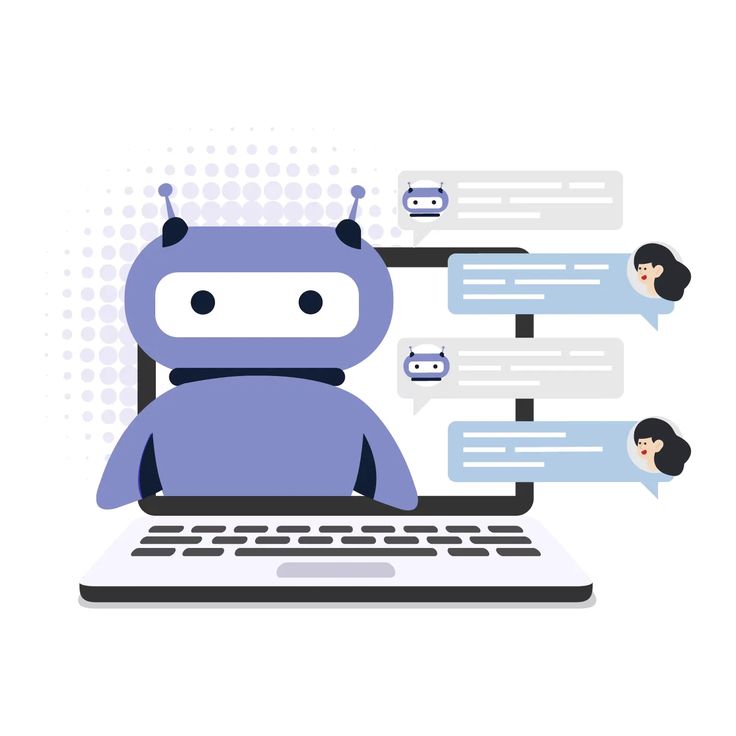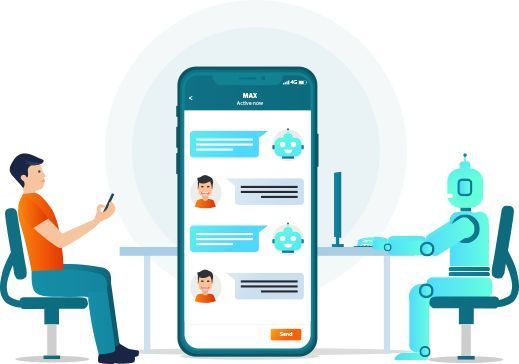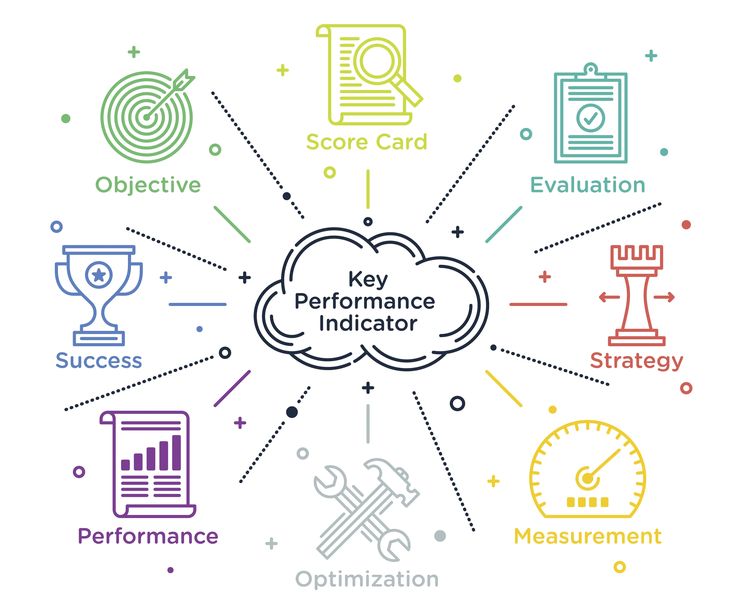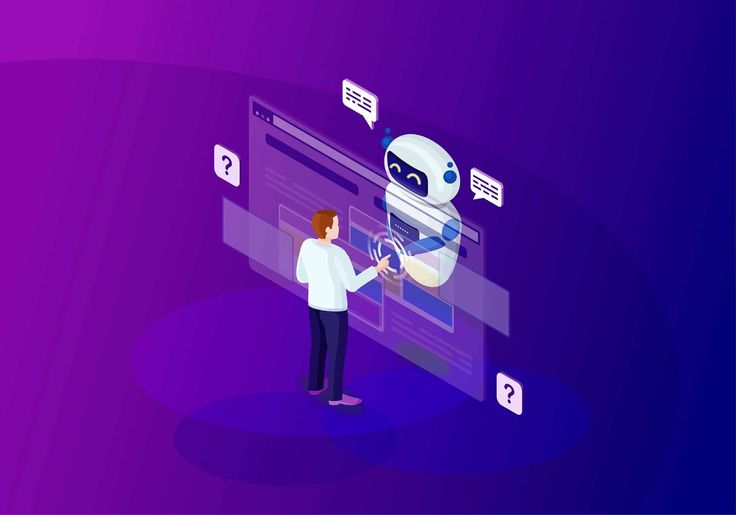The digital customer service landscape has evolved dramatically, with AI chatbots becoming essential infrastructure for businesses serious about providing exceptional support at scale. Unlike the primitive rule-based systems of the past, modern AI chatbots use sophisticated natural language processing and machine learning to deliver human-like customer service experiences 24/7. This comprehensive guide provides everything you need to successfully implement AI chatbot technology that enhances rather than replaces human customer service.
The Strategic Imperative: Why AI Chatbots Are No Longer Optional
Customer expectations have fundamentally shifted in the digital age. Today’s consumers expect immediate responses, personalized service, and round-the-clock availability – expectations that traditional customer service models struggle to meet cost-effectively.
The compelling statistics driving AI chatbot adoption:
- 80% of businesses plan to implement chatbots by 2025
- 67% of consumers worldwide used chatbots for customer support in the past year
- 24/7 availability increases customer satisfaction by 35% on average
- Cost reduction of 30-50% in customer service operations through chatbot implementation
- Response time improvement of 90% for routine customer inquiries
But successful chatbot implementation requires more than just deploying technology – it demands strategic planning, careful execution, and ongoing optimization to deliver meaningful business results.
Understanding Modern AI Chatbot Architecture

Conversational AI vs. Rule-Based Systems
Traditional Rule-Based Chatbots:
- Follow predetermined decision trees
- Limited to specific keyword recognition
- Struggle with variations in customer language
- Require extensive manual programming for each scenario
- Break down when customers deviate from expected paths
Modern AI-Powered Chatbots:
- Use natural language understanding to interpret customer intent
- Learn from interactions to improve responses over time
- Handle complex, multi-turn conversations
- Adapt to different communication styles and preferences
- Integrate with business systems for personalized, contextual responses
Key AI Technologies Powering Modern Chatbots
Natural Language Processing (NLP): Enables chatbots to understand customer messages regardless of phrasing, grammar, or spelling variations.
Machine Learning: Allows chatbots to improve performance based on successful customer interactions and feedback.
Intent Recognition: Identifies what customers actually want from their messages, even when expressed indirectly.
Entity Extraction: Pulls relevant information (names, dates, product numbers) from customer messages for processing.
Context Management: Maintains conversation history and context throughout extended customer interactions.
Pre-Implementation Planning: Foundation for Success
Phase 1: Business Objective Definition and Use Case Identification
Primary Chatbot Objectives:
- Cost Reduction: Decrease customer service operational expenses
- Availability Enhancement: Provide 24/7 customer support coverage
- Response Time Improvement: Eliminate wait times for routine inquiries
- Scalability: Handle increased customer volume without proportional staff increases
- Data Collection: Gather customer insights and interaction data for business intelligence
High-Impact Use Cases for AI Chatbots:
- FAQ Management: Instant answers to frequently asked questions
- Appointment Scheduling: Automated booking and rescheduling
- Order Status Inquiries: Real-time updates on purchases and services
- Lead Qualification: Initial screening and routing of potential customers
- Technical Support: Troubleshooting common product or service issues
- Account Management: Basic account information and updates
- Complaint Intake: Initial problem documentation and routing
Phase 2: Current State Assessment and Requirements Gathering
Customer Service Audit:
- Analyze current customer inquiry types and volumes
- Document average response times and resolution rates
- Identify peak support periods and staffing challenges
- Assess customer satisfaction scores and common complaints
- Evaluate existing customer service tools and integration capabilities
Technical Requirements Assessment:
- Website and mobile app integration needs
- CRM and database connectivity requirements
- Security and compliance considerations (GDPR, HIPAA, PCI, etc.)
- Scalability and performance requirements
- Multi-language and accessibility needs
Get Your Custom AI Phone Agent – Built For Your Business FREE
Before implementing complex chatbot systems, experience the power of conversational AI with something even more effective: a custom AI phone agent built specifically for your business.
Why Start with AI Voice Before Chat:
Higher Conversion Rates:
- Voice calls convert 10-15x higher than text-based interactions
- Customers trust voice communication more than text chat
- Complex issues resolve faster through natural conversation
- Emotional connection builds stronger customer relationships
Why Responsive Communication Matters:
90% of buyers demand a response within 10 minutes (HubSpot research)
55% will abandon a business if they can’t get a quick answer (Forrester)
73% will ditch brands after slow or poor service (Convin.ai)
82% rate ‘speed of response’ as a top factor in choosing businesses
What You’ll Receive – Completely FREE:
- ✓ Custom-Built AI Phone Agent – Trained specifically on your business information, services, and FAQs
- ✓ Dedicated Phone Number – Test your custom AI agent with a real phone number you can call anytime
- ✓ Personalized Greeting – Your AI answers with your business name and customized welcome message
- ✓ FAQ Knowledge Base – Your AI agent comes pre-loaded with answers to common questions about your business
- ✓ Appointment Scheduling Capability – Let callers schedule time with you (if desired)
- ✓ Message Forwarding – Get notified about important calls and requests
- ✓ Call Transcripts – Review conversations to see how your AI handles inquiries
- ✓ One-on-One Consultation – Get personalized advice on how to best implement AI in your business
How It Works – Ready in Less Than 24 Hours!
1. Submit Your Information – Fill out the simple form with your business details and website
2. We Build Your AI Agent – Our team creates a custom AI tailored to your business needs
3. Receive Your Test Number – Get a text with your dedicated phone number to try your AI
4. Test & Provide Feedback – Try out your AI and let us know what you think
No Credit Card Required • Custom Built For Your Business • Live Test Number Included
Comprehensive Chatbot Implementation Strategy

Phase 3: Platform Selection and Technology Architecture
Enterprise-Grade Chatbot Platforms
Microsoft Bot Framework:
- Best For: Large enterprises with Microsoft ecosystem integration
- Key Features: Advanced AI capabilities, enterprise security, extensive integration options
- Pricing: Variable based on usage and features
- Implementation Complexity: High, requires technical expertise
Google Dialogflow:
- Best For: Businesses requiring advanced natural language understanding
- Key Features: Google AI integration, multi-language support, voice capabilities
- Pricing: Pay-per-use model with free tier available
- Implementation Complexity: Medium to high
Amazon Lex:
- Best For: Companies using AWS infrastructure
- Key Features: Integration with Amazon ecosystem, voice and text capabilities
- Pricing: Pay-per-request model
- Implementation Complexity: Medium to high
Business-Ready Chatbot Solutions
Intercom Resolution Bot:
- Best For: SaaS companies and tech businesses
- Key Features: Integrated with customer messaging platform, machine learning optimization
- Pricing: $39-$999+ per month depending on features
- Implementation Complexity: Low to medium
Zendesk Answer Bot:
- Best For: Companies already using Zendesk for customer service
- Key Features: Seamless integration with existing help desk, AI-powered suggestions
- Pricing: $5-$15 per agent per month
- Implementation Complexity: Low
HubSpot Chatbots:
- Best For: Small to medium businesses using HubSpot CRM
- Key Features: CRM integration, lead qualification, marketing automation connection
- Pricing: Free tier available, paid plans $50-$3,200+ per month
- Implementation Complexity: Low
Phase 4: Conversation Design and User Experience Planning
Conversation Flow Architecture
Welcome Experience Design:
- Professional Greeting: Branded introduction that sets appropriate expectations
- Capability Communication: Clear explanation of what the chatbot can and cannot do
- Quick Access Options: Menu of common tasks for immediate customer access
- Human Handoff: Obvious path to human agents when needed
Intent Mapping and Response Development:
- Primary Intents: Most common customer requests and appropriate responses
- Secondary Intents: Less common but important customer needs
- Fallback Responses: Professional handling of unrecognized requests
- Escalation Triggers: Specific situations requiring human intervention
Personality and Brand Voice:
- Tone Guidelines: Formal, casual, friendly, professional based on brand identity
- Language Style: Technical complexity appropriate for customer base
- Humor and Personality: Appropriate use of brand personality elements
- Cultural Sensitivity: Inclusive language and cultural awareness
Advanced Conversation Features
Context Awareness:
- Conversation Memory: Ability to reference earlier parts of the conversation
- Customer History: Access to previous interactions and account information
- Session Continuity: Maintaining context across multiple conversation sessions
- Cross-Channel Context: Consistent experience across web, mobile, and other channels
Dynamic Response Generation:
- Personalized Greetings: Using customer name and account information
- Contextual Recommendations: Suggestions based on customer history and current needs
- Real-Time Information: Live data from inventory, scheduling, and other business systems
- Adaptive Language: Adjusting communication style based on customer preferences
Phase 5: Integration and Technical Implementation
Business System Integrations
Customer Relationship Management (CRM):
- Data Synchronization: Automatic customer record updates from chatbot interactions
- Lead Creation: Converting chatbot conversations into qualified leads
- Case Management: Creating support tickets from chatbot escalations
- Activity Tracking: Recording all customer interactions for relationship management
E-commerce and Inventory Systems:
- Product Information: Real-time inventory and pricing data
- Order Management: Status updates and modification capabilities
- Shopping Cart Integration: Abandoned cart recovery and purchase assistance
- Return Processing: Automated return initiation and tracking
Scheduling and Appointment Systems:
- Calendar Integration: Real-time availability checking and booking
- Reminder Systems: Automated confirmation and reminder messaging
- Rescheduling Capabilities: Easy appointment modification through chat
- Resource Management: Coordinating staff and equipment availability
Security and Compliance Implementation
Data Protection and Privacy:
- Encryption: End-to-end encryption for sensitive customer data
- Access Controls: Role-based permissions for chatbot management
- Data Retention: Automated deletion of customer data per compliance requirements
- Audit Trails: Complete logging of all customer interactions and data access
Industry-Specific Compliance:
- HIPAA Compliance: Healthcare data protection and privacy requirements
- PCI DSS: Payment card data security standards
- GDPR Compliance: European data protection regulation adherence
- Financial Services: Banking and financial data protection requirements
Phase 6: Testing and Quality Assurance
Comprehensive Testing Protocol
Functional Testing:
- Conversation Flow Testing: Verify all intended conversation paths work correctly
- Integration Testing: Confirm connections with business systems function properly
- Load Testing: Ensure chatbot handles expected conversation volumes
- Cross-Platform Testing: Verify consistent performance across devices and browsers
User Experience Testing:
- Customer Journey Testing: End-to-end testing of common customer scenarios
- Accessibility Testing: Compliance with disabilities accommodation requirements
- Multi-Language Testing: Accuracy and appropriateness of non-English interactions
- Edge Case Testing: Handling of unusual or unexpected customer inputs
Content and Language Quality:
- Grammar and Spelling: Professional language quality verification
- Brand Voice Consistency: Alignment with established brand communication standards
- Cultural Sensitivity: Appropriate language for diverse customer base
- Technical Accuracy: Verification of factual information provided by chatbot
Launch Strategy and Performance Optimization
Phase 7: Soft Launch and Pilot Testing
Limited Deployment Strategy:
- Select Customer Segments: Beta testing with specific customer groups
- Controlled Traffic: Gradual increase in chatbot interaction volume
- Staff Monitoring: Human oversight during initial deployment period
- Feedback Collection: Systematic gathering of customer and staff input
Performance Monitoring Setup:
- Real-Time Analytics: Live monitoring of chatbot performance and customer satisfaction
- Conversation Analysis: Regular review of customer interactions for optimization opportunities
- Error Tracking: Identification and resolution of chatbot failures or limitations
- Success Metrics: Measurement of key performance indicators and business impact
Phase 8: Full Deployment and Continuous Improvement
Scaling and Optimization:
- Traffic Gradual Increase: Methodical expansion of chatbot usage
- Feature Enhancement: Adding new capabilities based on customer needs and feedback
- Integration Expansion: Connecting additional business systems for enhanced functionality
- Performance Tuning: Ongoing optimization of response accuracy and speed
Machine Learning and AI Improvement:
- Training Data Enhancement: Using successful interactions to improve AI performance
- Intent Recognition Refinement: Improving understanding of customer requests
- Response Quality Enhancement: Upgrading chatbot responses based on customer feedback
- Predictive Capabilities: Implementing proactive customer service features
Measuring Chatbot Success: Comprehensive KPI Framework

Customer Experience Metrics
Response and Resolution Performance:
- Average Response Time: Target under 5 seconds for initial chatbot responses
- First Contact Resolution Rate: Percentage of issues resolved without human escalation
- Customer Satisfaction Score: Rating of chatbot interaction quality
- Conversation Completion Rate: Percentage of customers who complete their intended interaction
Engagement and Adoption Metrics:
- Chatbot Usage Rate: Percentage of customers choosing chatbot over other support channels
- Return User Rate: Customers who use chatbot multiple times
- Conversation Length: Average number of messages per customer interaction
- Channel Preference: Customer preference for chatbot versus human support
Business Impact Metrics
Operational Efficiency:
- Cost Per Interaction: Reduction in customer service costs through chatbot automation
- Agent Productivity: Improvement in human agent performance through chatbot pre-filtering
- Volume Handling: Increase in customer service capacity without staff increases
- Response Time Improvement: Overall customer service response time enhancement
Revenue and Growth Impact:
- Lead Generation: Number of qualified leads generated through chatbot interactions
- Conversion Rate: Sales conversion from chatbot-assisted customers
- Upselling Success: Additional sales generated through chatbot recommendations
- Customer Retention: Improvement in customer retention through better service
Advanced Chatbot Strategies and Features
Proactive Customer Engagement
Behavioral Trigger Implementation:
- Website Activity: Chatbot activation based on specific page visits or behaviors
- Shopping Cart Abandonment: Proactive assistance for customers leaving without purchasing
- Support Page Visits: Immediate help offers for customers viewing help content
- Return Visitors: Personalized greetings and assistance for returning customers
Predictive Customer Service:
- Issue Anticipation: Proactive outreach based on potential customer problems
- Maintenance Reminders: Automated reminders for service renewals or product maintenance
- Upgrade Notifications: Timely suggestions for product or service upgrades
- Satisfaction Monitoring: Proactive check-ins with customers who may have issues
Multi-Channel Integration Strategy
Omnichannel Consistency:
- Cross-Platform Synchronization: Consistent conversation history across web, mobile, and social media
- Unified Customer Profile: Single view of customer across all interaction channels
- Seamless Channel Transfer: Easy movement between chatbot, phone, and human support
- Consistent Brand Experience: Uniform brand voice and capabilities across all channels
Social Media Integration:
- Facebook Messenger: Native chatbot functionality within Facebook platform
- WhatsApp Business: Professional chatbot integration for WhatsApp users
- Instagram Direct Messages: Automated response capabilities for Instagram inquiries
- Twitter Direct Messages: Consistent support experience across social platforms
Common Implementation Pitfalls and Solutions

Challenge 1: Over-Promising Chatbot Capabilities
Solution: Set realistic expectations with customers about chatbot limitations, provide clear escalation paths to human agents, and focus on delivering excellent service within defined scope.
Challenge 2: Inadequate Training Data and Content
Solution: Invest significant time in developing comprehensive conversation content, use real customer interaction data for training, and continuously update chatbot knowledge base.
Challenge 3: Poor Integration with Existing Systems
Solution: Plan integration requirements early in the process, work with experienced technical partners, and prioritize seamless data flow between chatbot and business systems.
Challenge 4: Neglecting Ongoing Optimization
Solution: Establish regular chatbot performance review processes, continuously analyze customer interactions for improvement opportunities, and maintain dedicated resources for chatbot management.
The Future of AI Chatbots in Customer Service
Emerging Technologies and Capabilities
Advanced Conversational AI:
- GPT-Based Models: More natural, human-like conversation capabilities
- Emotional Intelligence: Recognition and appropriate response to customer emotional states
- Multi-Modal Interaction: Integration of text, voice, and visual elements in customer service
- Real-Time Learning: Immediate adaptation based on individual customer interactions
Enhanced Personalization:
- Individual Customer Adaptation: Chatbots that learn and adapt to individual customer communication styles
- Predictive Customer Service: Anticipating customer needs before they’re expressed
- Dynamic Content Generation: Real-time creation of personalized responses and recommendations
- Contextual Intelligence: Deep understanding of customer situation and history
Industry-Specific Evolution
Healthcare Chatbots: Advanced medical triage, appointment scheduling, medication reminders, and patient education while maintaining strict HIPAA compliance and medical accuracy.
Financial Services Chatbots: Complex transaction processing, fraud detection, financial advisory services, and loan processing through secure, compliant conversational interfaces.
E-commerce Chatbots: Personal shopping assistants, inventory management, order processing, and customer support through intelligent product recommendation and purchase facilitation.
Professional Services Chatbots: Client intake, project management, service delivery coordination, and relationship management through sophisticated business process automation.
Your Chatbot Implementation Action Plan

Week 1-2: Foundation and Planning
- Complete business objective definition and use case identification
- Conduct comprehensive current state assessment
- Research and evaluate chatbot platforms suitable for your needs
- Develop project timeline and resource allocation plan
Week 3-4: Platform Selection and Design
- Select chatbot platform and begin technical setup
- Design conversation flows and user experience
- Develop chatbot personality and brand voice guidelines
- Plan integration requirements with existing business systems
Month 2: Content Development and Integration
- Create comprehensive conversation content and responses
- Implement business system integrations and data connections
- Develop testing protocols and quality assurance procedures
- Train staff on chatbot capabilities and management procedures
Month 3: Testing and Launch
- Complete comprehensive testing across all scenarios and platforms
- Conduct pilot launch with limited customer segments
- Monitor performance and gather feedback for optimization
- Plan full deployment based on pilot results
The future of customer service belongs to businesses that can seamlessly blend AI efficiency with human empathy. AI chatbots aren’t replacing human customer service agents – they’re enhancing human capabilities by handling routine inquiries efficiently while freeing skilled agents to focus on complex, high-value customer relationships.
Successful chatbot implementation requires strategic planning, careful execution, and ongoing optimization. Start your journey today with a clear understanding of your objectives, a well-chosen technology platform, and a commitment to continuous improvement.
Ready to Transform Your Customer Experience?
Get Your Custom AI Phone Agent – Built For Your Business FREE
Never miss another call while delivering exceptional customer experiences. We’ll build your personalized AI phone agent at no cost – just tell us about your business.
Let Your Team Focus on What Matters Most
While your AI phone agent handles routine customer interactions, your team can focus on high-value activities. Our voice AI agents efficiently manage high call volumes, giving your staff more time for complex customer experience challenges.
Comprehensive Communication Solution
Your custom AI phone agent supports multiple languages and handles both inbound and outbound calls, ensuring no customer inquiry goes unanswered. The system creates support tickets automatically, streamlining your customer service operations.
What You’ll Receive – Completely FREE:
- ✓ Custom-Built AI Phone Agent – Trained specifically on your business information, services, and FAQs
- ✓ Dedicated Phone Number – Test your custom AI agent with a real phone number you can call anytime
- ✓ Personalized Greeting – Your AI answers with your business name and customized welcome message
- ✓ FAQ Knowledge Base – Your AI agent comes pre-loaded with answers to common questions about your business
- ✓ Appointment Scheduling Capability – Let callers schedule time with you (if desired)
- ✓ Message Forwarding – Get notified about important calls and requests
- ✓ Call Transcripts – Review conversations to see how your AI handles inquiries
- ✓ One-on-One Consultation – Get personalized advice on how to best implement AI in your business
How It Works – Ready in Less Than 24 Hours!
1. Submit Your Information – Fill out the simple form with your business details and website
2. We Build Your AI Agent – Our team creates a custom AI tailored to your business needs
3. Receive Your Test Number – Get a text with your dedicated phone number to try your AI
4. Test & Provide Feedback – Try out your AI and let us know what you think
No Credit Card Required • Custom Built For Your Business • Live Test Number Included
Don’t let your competitors gain the advantage of AI-powered customer service. Start your implementation journey today and discover how conversational AI can transform your customer experience while reducing operational costs and improving business efficiency.
